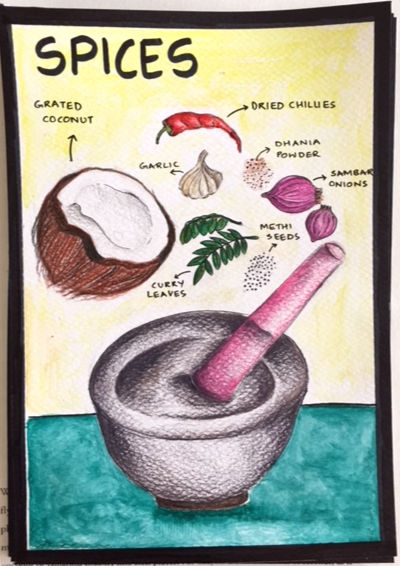Hidden and Unsaid
- Anupama Daga
- Sep 1, 2021
- 2 min read
The quality of being hidden posed many opportunities to question its origins. I wanted to explore why and when the qualities of invisibility and hidden-ness exposed themselves. I wanted to understand what are the narratives, plotlines, locations and spaces that created the invisible and who made those narratives, who decided what was to be unseen. The first thing popping in my head was related to the internship I had just had – volunteering with PARI (People’s Archive of Rural India) where we did just that. Questioning the affectations of our country’s marginalized, outcasts and the unseen.
In my fieldwork, I came into contact with Ajmera Didi’s gripping story – albeit grim and dark, it brought to the forefront an important aspect of invisibility under the systems. Very often the most invisible under this cloak of politics, socio-economics and culture are those that seem to be the most vital to the system. Is it their vitalness that renders them unseen, their most obvious need in the functioning of our societies that makes people forget them? Ajmera didi is a ragpicker, living in the juggis that lined the back of my residential society, in the dirty dregs of society, with no clean drinking water or sanitation or sewage systems and five children squashed in a tin room, the size of my bathroom. Unsure if they had aadhaar cards, Ajmera didi’s family was of a miniscule consequence to the government, unregistered and invisible to their eyes. Her second oldest daughter babysat my cook’s infant, which allowed Rani didi to come and feed us. An interesting dynamic – a chain of events that caused our basic needs to be met.
Rani didi was the only income generating member of her family – her husband, a drunkard, had been rendered unemployed during the pandemic, and often took out his rage by sprouting red, black and blue bruises on Rani didi’s lip, jaw and neck. One day, I discovered her crumpled in the corner of our kitchen, sambar boiling on the pot, tamarind paste ready to be smattered inside – sobbing into the folds of her sari. Her husband had left her.
What happens when the hidden are revealed? How does this process of exposition come about to be, and what are the truths that everyone wants to know that are being revealed? Are some things better left hidden? During coronavirus, humans as a society were reduced to data and statistics. The number of deaths, the number affected, the number vaccinated all squeezed into the depths of a single number, a synecdoche perhaps? Literary devices are used for simpler expression – they make reading more interesting and richer. Illusions, metaphors and distractions are strategically placed within the text – to be read between the lines.
The novelist hides behind the voice of a narrator, perhaps revealing her opinions secretively through rhetorical devices. Observation is hiding in plain sight, the bird-watcher, blending into a large tree, the journalist in plain clothes, unseen but alert to the slightest of movements. Creatives – rappers, artists, authors create personas to communicate their hidden meanings and expose these in their art. Personas and masks are visible in layers between you and the next person, you and the online friend, and on looking deeper within yourself, the dynamic between the self and the ego, the Id and the I.




Comments